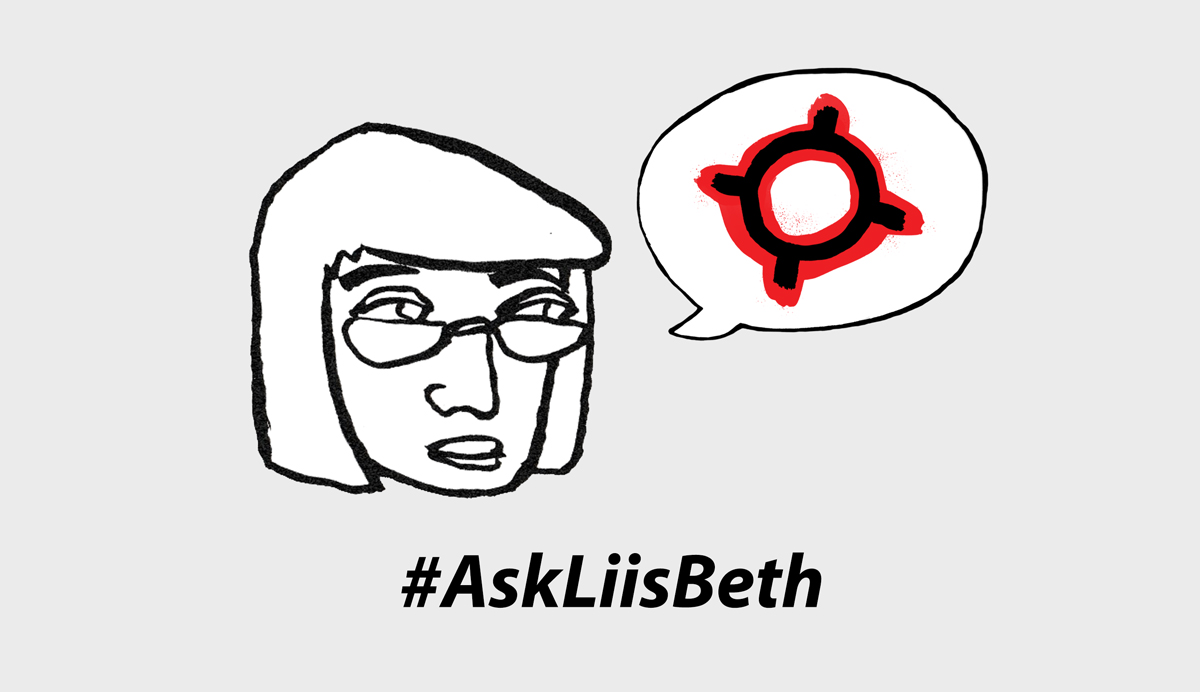
Patti Pokorchak launched SageData Solutions with her romantic partner in 1991. “I got the first sale,” Pokorchak, now 61 years old, recalls. “We were co-founders in every way except legally. I had a romantic ideal that we would be together forever.” Today, the business is thriving, but the romance fizzled, leaving Pokorchak with no financial stake in the enterprise she helped start. “We talked about this being our retirement,” she recalls, sipping chamomile tea in the kitchen of a home overlooking a ravine in Toronto’s west end. The normally bubbly Pokorchak, now a business coach, laments, “The scary part is having given up a major part of my high-earning potential years to put sweat equity into something that did not pay off. I made a lot less than other comparable MBAs. I’ll never get that time back, or the energy to do it again.” Pokorchak sighs and says, “I was naïve.”
Understand the Need for Strong Governance
Pokorchak’s story illustrates a sad truth about start-ups and their founders. Almost half of start-ups don’t make it past five years. While co-founder romantic couples may be guided by trust more than other partnerships, Vanessa Grant, a corporate governance lawyer at Gowling WLG’s Toronto office, says they need to draw up proper contracts, just like everyone else. “This is a business relationship,” she insists. “It’s not about ‘I love you’ or ‘I don’t love you.’ Never confuse business with emotion.”
There is often more at stake when romantic partners become business partners, says Grant. “You need to realize nothing is permanent. Your business will change, your lives will change, and your priorities will change.” The disability of a partner and different visions for the business can upset stable partnerships. Given that close to 50 per cent of marriages fail, divorce may pose the greatest threat to a couple’s business relationship.
While some couples want to leave a legacy for future generations, fewer than 10 per cent of family businesses survive into the third generation. “The moment it goes beyond two people having fun in the basement, you have to think about succession,” says family enterprise advisor Paul Pittman in his chipper British accent. “A great business marriage is typically two sides of a coin. One person is the front like sales; the other is the back, the brakes, the Steady Eddy that says, ‘Hold on, have you thought about…?’ But if one gets distracted or taken out of the business, the risk is the end of the business. You’ve lost one of two fundamental cogs.”
Clearly, creating a sound governance model can help protect both partners and the business. Yet too few work on that planning. Even when couple-led start-ups survive into second-generation family businesses, governance models can be spotty. Says Paul MacDonald, executive director of the Canadian Association of Family Enterprises (CAFE): “Very few family enterprises have formal succession plans, advisory boards, etc.”
Start By Aligning Your Values
Chia Chia Sun and Gardiner Smith, established executives in other companies, had been romantic partners for four years before funding Damiva, a women’s health company that manufactures all-natural products for menopausal health. When I met up with them on a warm spring day in the bright Yorkville office of their investors, Smith explained why so few couples work on establishing proper governance. “The untold part of the story is there isn’t a lot of resources for corporate governance in small- or mid-sized companies,” he says. In the absence of formal governance processes, Smith adds that it is important to be aligned with your partner on a personal set of drivers and values. “Without this, you just have constant conflict.”
Sun and Smith are both financially aggressive and like to compete at the highest level, but Smith says other values shape their business plans. “Money as a game and a goal in and unto itself doesn’t hold much interest for us. It’s got to be driven by some values more fundamental than that,” he says. For example, Sun agonized for months about whether to use taboo-breaking marketing to sell Mae, their female vaginal lubricant. On the one hand, it expressed what she believed was needed to promote women’s health but she worried about the impact the risk-taking campaign might have on the bottom line. Smith finally advised Sun to let her principles guide her. “Let’s just get it out there and what will happen with the money will happen,” he said. It worked. Mae is now stocked by national pharmacy chains. And the cheeky packaging Sun agonized over? It went like this: “Feeling drier than a British comedy? Honey, you are not alone. Pick me up, take me home and get ready to feel like a teenager again, but with better judgement.”
Write Down Governance Practices—NOW!
Even before a couple establishes a formal model, Grant advises them to start documenting procedures from day one. “Write it down and write it down now,” she says. “Even before you get to the shareholders’ agreement, write down what each of you expect in a business relationship, and check to make sure those goals are consistent. Set up clear expectations, decision-making structures, and how the business relationship will terminate. Then once you have established the business relationship, revisit your governance structure, including shareholder agreements, on a regular basis.” She warns against being penny-smart and pound-foolish—it is far more complicated and expensive to untangle separate interests later, particularly if the relationship becomes acrimonious. The formality of documentation is good protection, she insists: “If you have set up the relationship on a business footing and are clear about what happens in various scenarios, then the chances that third-party investors will oust you are lower because you have demonstrated a level of business maturity.”
In 2011, stay-at-home mom Tracy Rossetti launched MyBabbo, a Toronto firm that creates photo books and digital albums—as well as online memorial sites—for bereaved grieving families. What had started as a way to help her family grieve the loss of her father-in-law (“Babbo” is dad in Italian) had grown by 2015 and was big enough for her husband, Mirco, to leave his senior marketing role at Nestle Canada and join the enterprise. As a way of kickstarting their business relationship and developing a shared business vision, the Rossettis wrote out 12 Guiding Principles, which are rooted in their shared Christian faith. For example, principle one is “Know Your Why” while two is “Be Rooted in LOVE.” When there’s no time to consult, the principles help them make decisions that adhere to the company’s vision. For example, after Mirco formed an alliance with a grief counsellor, he decided to buy the counsellor’s books and include them in the MyBabbo package provided to funeral homes—without raising their prices. This was an expense of thousands of dollars and increased inventory costs. Tracy later asked Mirco, “Are you sure? Should we ask funeral homes if they want it?” Mirco told her, “It’s the right thing to do.” Tracy agreed. “You’re right,” she said, “It’s only money,” which reflects MyBabbo’s seventh principle: “Give Back.”
After establishing foundation elements such as their guiding principles and a solid business plan, Tracy and Mirco are now in the process of incorporating MyBabbo. Their plan is to split shares evenly.
While it seems intuitive to go 50/50 in a couple-run start-up, not all businesses do so—nor should they. Rather, couples should consider who made the initial investment of time and money and who shoulders more responsibility. When Damiva incorporated, Sun and Smith did not take equal stakes in the company. Sun is the CEO (cheekily referred to as “the woman on top at Damiva”) and has “substantially more” shares than Smith, who is the president. “Ultimately we are business people, so we looked at the investment of money and time,” says Sun. “I hold a lot of responsibility for vision, financial return, and future opportunity.” A key step in establishing Damiva’s corporate governance was acknowledging who took the lead in the business. Smith adds, “When it’s 50/50, I think there is very little room for compromise; you can’t split the baby. If the relationship ends, one person has to buy the other out, or you shut down the business and distribute the proceeds.” But Smith insists he wouldn’t even accept equal shares. “It’s not right.”
Get Advisors On Board
David Smith, an advisor to family enterprises, says that establishing an advisory team can help couples develop a solid governance model. “High-level best practices in the early days are to put an advisory system in place, whether formal or not,” he says. He cautions against leaning too heavily on advisors who may be dependent on the business, such as lawyers or accountants, because their personal stake may colour their advice. A diversity of inputs in very important “to encourage a wider angle view,” says Smith.
Damiva recently established a formal board of directors. Prior to this, it retained advisors under consulting contracts. Its formal board now includes the CEO (Sun), the president (Smith), and a director who represents their investor group. The board’s mandate is to approve major expenditures, new hires, and executive terminations. Says Sun: “If you are going to bring in savvy, good investors, they are going to want a board of directors to protect their interests. And we didn’t want just any investors.” Smith concurs: “Health care is not a corner store. It is a globally competitive business.”
Even before establishing a formal board, Damiva created an arbitration clause to resolve disagreements about job performance. It was initially put in place to protect Smith as the minority shareholder. But now that Smith could potentially side with the third director to oust Sun, the provision protects her too. The assessment of “performance” can be subjective of course. “I don’t want to say we are disadvantaged as female CEOs, but we are in a unique position so we have to carve out these roles and pioneer in a way that a male CEO doesn’t need to.”
At MyBabbo, there is no formal board of directors as of yet. Instead, they have relied on a group of friends who bring marketing, operations, legal, and related perspectives. “We wanted to ensure a good representation,” says Mirco. The diverse advice validated their decision to adopt a business-to-business model with funeral homes (rather than a business-to-consumer model that might cover every life stage) to take advantage of an untapped market. Their advisory meetings were often casual dinners around their dining room table. Says Tracy: “We paid them with meatballs and good will.” Five years into their business, the Rossettis are now developing a more formal advisory process.
Define Distinct Roles
When a partnership spans both business and personal life, roles can get complicated. As marriages don’t have job descriptions, resentments often arise over how to divvy up housework, parenting, and financial contributions. Clarity takes on heightened importance when partners are negotiating more than whose turn it is to take out the trash.
Andrée Carpentier and Jordan Boesch, high school sweethearts who married in July 2013 after eight years of dating, didn’t wait nearly as long to enter into a business partnership. Four months after marrying, they took a tech accelerator program in Silicon Valley and shortly after launched 7shifts, a company that develops employee-scheduling technology. They started their company with a third co-founder, Johannes Lindenbaum.
Speaking from her office in Saskatoon, Carpentier recalls that mixing romance and business initially appeared risky. “One investor said he hadn’t seen many couples work well as business partners, but the only ones he saw who were successful had distinct responsibilities that didn’t overlap,” she says. The couple followed that advice. “Having clear distinctions in roles and decision-making helps us tremendously.”
Boesch takes responsibility for developing products while Carpentier oversees operations. That helped guide them through an early disagreement about industry specialization. Says Carpentier: “Jordan wanted to focus on the restaurant industry. I had a constant fear that we were missing out on a large market segment because 60 per cent of our clients at the time were not in the restaurant business. Jordan’s assessment was that the market was too saturated with generalist software. As concerned as I was, I respected his decision and agreed to just give it a whirl.”
It was the right call. Today, more than 90 per cent of 7shifts’ clients are restaurants, including major chains such as Boston Pizza, Burger King, and Booster Juice. 7shifts has expanded its roster of clients from 100 establishments in 2013 to more than 1,600 today. Over the past year, revenue has tripled and the company now employs a team of 14.
Delineation of roles is a best practice for the Damiva and MyBabbo couples as well. At MyBabbo, Mirco takes care of strategic planning, finance, and the inventory side of the business. Tracy leads sales, marketing, and their team of 15. Sun and Smith came from different silos in corporate America so they found it easy to divide and conquer, plus neither wanted the other to be constantly looking over their shoulder. “No senior businessperson would want to be micromanaged,” says Smith. “That would be extremely upsetting.”
Govern to Achieve Work-Life Balance
Since launching a start-up can be an all-consuming endeavour, the trickiest governance practice for co-founder couples is how to govern the balance between their work and romantic relationship. No one understands this more than Sun: “We work on extremely sensitive and taboo topics related to peri- and post-menopausal health. As our first suite of products is in the sexual health arena, we also delve deeply into relationship and intimacy topics in our daily conversations. So sometimes it seems that even our pillow talk is about work.”
What is Grant’s lawyerly advice on this topic? “Don’t lose sight of the fact that you still love your business partner. It’s important to maintain a relationship outside of business. Have fun. And you can have more fun after you deal with the governance stuff.”
For more information on good governance practices, visit The Canadian Coalition for Good Governance or The Institute on Governance.











